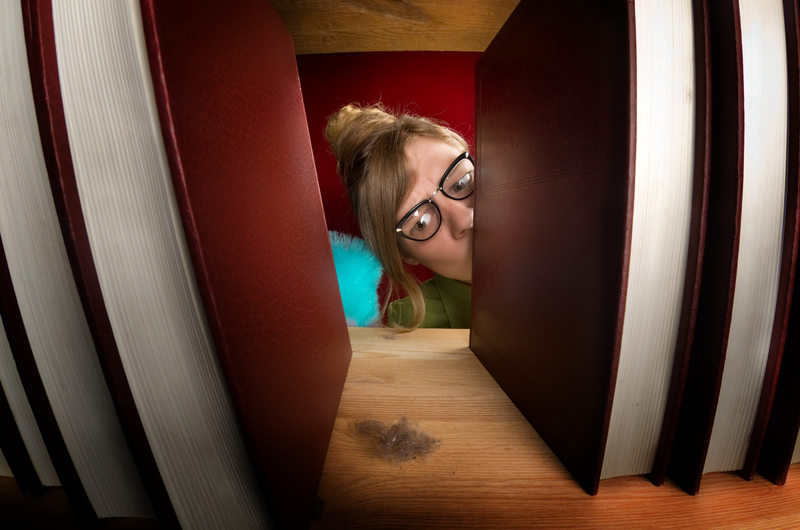The Pros and Cons of Steam Cleaning Leather Sofas
Posted on 22/05/2025
The Pros and Cons of Steam Cleaning Leather Sofas
Leather sofas are a luxurious addition to any living space, offering elegance, comfort, and durability. However, keeping them clean can sometimes be challenging. Among the many methods available, steam cleaning has garnered attention as a potential way to maintain and rejuvenate leather furniture. But is steam cleaning leather couches truly effective and safe? In this comprehensive guide, we'll explore both the advantages and disadvantages of using steam cleaning techniques on your prized leather seating, and help you make an informed decision for your home.

Understanding Leather Sofas and Their Cleaning Needs
Leather sofas come in various types, such as full-grain, top-grain, bonded, and faux leather. Each type has distinct characteristics that influence how it should be cleaned. Unlike fabric sofas, which often tolerate a wider range of cleaning options, leather is sensitive to certain chemicals, excess moisture, and harsh treatment. When cared for properly, leather sofas can last decades, but improper cleaning methods can cause severe damage.
Why Regular Cleaning Is Vital for Leather Furniture
- Preserves appearance: Regular cleaning keeps your leather looking vibrant and lustrous.
- Prevents damage: Dust, dirt, and oils can cause premature wear, cracks, and fading.
- Maintains hygiene: Cleaning removes allergens, bacteria, and pet dander that may accumulate.
With these benefits in mind, it's crucial to use appropriate cleaning methods. Recently, many homeowners have considered steam cleaning their leather sofas for a deeper clean. Let's look at the pros and cons of this approach.
What Is Steam Cleaning for Leather Sofas?
Steam cleaning involves using a specialized machine that emits hot vaporized water. This steam penetrates the surface, loosening dirt, stains, and bacteria. Traditionally used on hard floors and textiles, steam cleaning leather furniture is often promoted for its ability to kill germs and lift grime without harsh chemicals. However, leather is not as absorbent or robust as upholstery fabric, prompting questions about whether steam cleaning is wise for this material.
The Pros of Steam Cleaning Leather Sofas
1. Effective Germ Elimination
One of the significant benefits of using steam cleaning on leather couches is its ability to remove bacteria, viruses, and allergens. The high temperature of the steam can kill a broad spectrum of harmful microorganisms, ensuring a cleaner and healthier seating area for your family.
2. Chemical-Free Sanitization
Many leather sofa owners are concerned about harsh cleaning solvents that may degrade the leather's surface or leave behind toxic residues. Steam cleaning uses only water, making it an eco-friendly and gentle cleaning option for those wishing to avoid chemicals.
3. Stain and Odor Removal
Steam cleaning can help break down stubborn stains and tackle unpleasant odors that have penetrated the leather. This is especially useful in homes with kids or pets, where spills and accidents can leave noticeable marks and smells.
4. Revitalizing the Appearance
Safe application of steam can sometimes restore the natural suppleness and shine of leather, making your old sofa look fresher and more inviting. The warmth of the steam may assist in gently opening leather pores, helping moisturizers and conditioners to penetrate more deeply when applied afterward.
5. Convenience and Time Efficiency
Steam cleaners are often easy to use and save significant time compared to traditional methods. For those maintaining large or multiple leather sofas, steam cleaning can simplify the process and reduce manual scrubbing.
- Quick cleaning cycles
- Minimal physical effort required
- No need to wait for drying as with water-based cleaning methods
6. Penetration Into Crevices
Steam reaches areas that are often hard to clean by hand, such as seams, crevices, and within tufted sections of the sofa. This helps maintain the cleanliness and overall hygiene of the leather in areas that are typically neglected.
The Cons of Steam Cleaning Leather Sofas
1. Risk of Moisture Damage
Leather is a natural material that is highly sensitive to excess moisture. Overexposure to steam can saturate the leather, leading to potential issues like:
- Warping and loss of shape
- Visible water stains and rings
- Encouragement of mold or mildew growth in seams
If not performed with extreme caution, steam cleaning might cause irreversible damage, particularly in untreated or fragile leathers.
2. Drying and Cracking Problems
When steam is applied to leather, it can strip away vital natural oils, leaving the material dry and more susceptible to cracking or peeling. Lack of proper conditioning immediately after steam cleaning can exacerbate this issue.
3. Not Suitable for All Leather Types
Delicate or unfinished leathers, such as nubuck, suede, or aniline, can be particularly vulnerable to steam. Using a steam cleaner on these materials can result in irreversible texture and color damage.
- Always check your sofa manufacturer's cleaning instructions
- Spot test an inconspicuous area before proceeding
4. Potential Hardware and Stitching Issues
Leather sofas often feature decorative stitching, buttons, and hardware. Steam can loosen adhesives, weaken stitches, or cause metal components to tarnish or corrode over time.
5. Inconsistent Cleaning Results
Without professional training, steam cleaning leather sofas can sometimes yield patchy results, such as uneven coloration, watermarking, or residual streaks. Amateur application can also increase the risks associated with heat and moisture.
6. Voiding of Warranties
Many leather furniture warranties specifically prohibit steam cleaning or the use of any water-based methods. Check with the manufacturer before attempting this cleaning technique, or you could void your warranty.
Best Practices for Steam Cleaning Leather Sofas
If you choose to proceed with steam cleaning, follow these essential guidelines to minimize risks and achieve the best outcome:
- Check Manufacturer Recomendations: Always review your sofa's care label and consult the manufacturer's instructions regarding allowable cleaning methods.
- Use the Right Equipment: Select a high-quality steam cleaner designed for delicate surfaces, ideally with adjustable steam settings and upholstery attachments.
- Pre-Test Before Full Cleaning: Always spot test a hidden section of the leather to make sure no fading, wrinkling, or texture change occurs.
- Prepare the Surface: Vacuum the sofa thoroughly and wipe it with a dry microfiber cloth to remove superficial dust and debris.
- Minimal and Controlled Steam Application: Keep the steamer moving constantly and avoid concentrating steam on one area. Use the lowest effective setting.
- Allow Immediately to Dry: Use dry, soft towels to absorb any surplus moisture right after steam cleaning. Never leave the sofa damp.
- Condition the Leather: Once completely dry, apply a suitable leather conditioner to restore suppleness and prevent drying or cracking.
- Ventilate the Area: Make sure the room is well-ventilated post-cleaning, as this will help the leather dry faster and reduce the risk of mildew.
Professional vs. DIY Steam Cleaning: What's Better?
Both professional and do-it-yourself steam cleaning have their benefits and drawbacks when it comes to leather upholstery.
- Professional cleaning services are equipped with the expertise and specialized tools to assess and clean your leather sofa safely. They can tailor their approach to the specific type of leather and condition of your furniture, minimizing risks. The main disadvantage is cost, as professional cleaning can be expensive.
- DIY steam cleaning allows more flexibility and is cost-effective, but there is a higher risk of making mistakes that can damage your leather. Inexperience with steamers or lack of understanding about your sofa's materials can result in costly mishaps.
When to Choose Each Option:
- Professional steam cleaning is ideal for: High-value or antique leather sofas, unknown leather types, or situations involving severe stains or odours.
- DIY steam cleaning is best for: Lower-value, well-sealed leather sofas where the owner is confident in their knowledge and application of the process.

Alternatives to Steam Cleaning for Leather Sofas
If the risks associated with steam cleaning concern you, consider these alternative methods for cleaning leather couches:
- Dry Dusting and Vacuuming: Use a soft microfiber cloth and vacuum with an upholstery attachment regularly to prevent dust build-up.
- Bespoke Leather Cleaners: Commercially available leather cleaning solutions are specifically formulated to clean and protect leather without oversaturating it.
- Gentle Soap Solution: A mild soap diluted in distilled water can be used with a damp (not wet) cloth for spot cleaning. Always dry the surface immediately.
- Leather Conditioning: Occasional application of a leather conditioner will keep the material supple and resilient to cracking.
Conclusion: Is Steam Cleaning Leather Sofas Right for You?
Steam cleaning leather sofas offers both impressive benefits and notable risks. It is highly effective at sanitizing, removing dirt and odors, and revitalizing the appearance of more robust, sealed leather couches. However, the presence of heat and moisture makes it risky for more delicate types, and improper use can result in expensive, sometimes irreversible, damage.
If you're committed to maintaining the beauty of your leather furniture, weigh the pros and cons carefully. Always consult your sofa's care instructions, consider the type of leather, and test methods on inconspicuous areas before undertaking a full cleaning. When in doubt, don't hesitate to call in professional cleaners with proven experience in leather upholstery care.
In summary, steam cleaning leather couches--when performed correctly--can be a powerful tool in your cleaning arsenal, but it is not without its risks. Prioritize the longevity and appearance of your leather sofa by staying informed, cautious, and thorough in your approach to cleaning.





